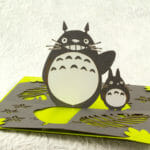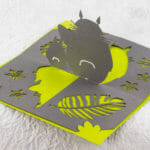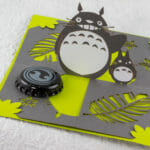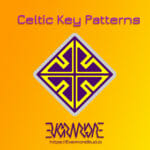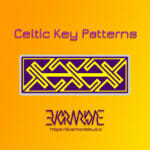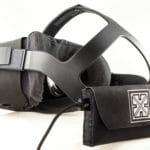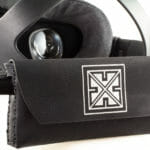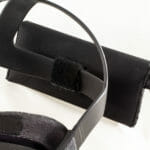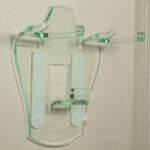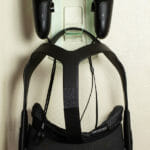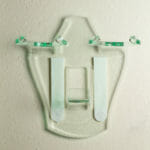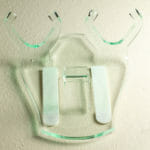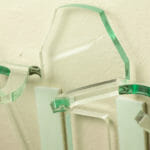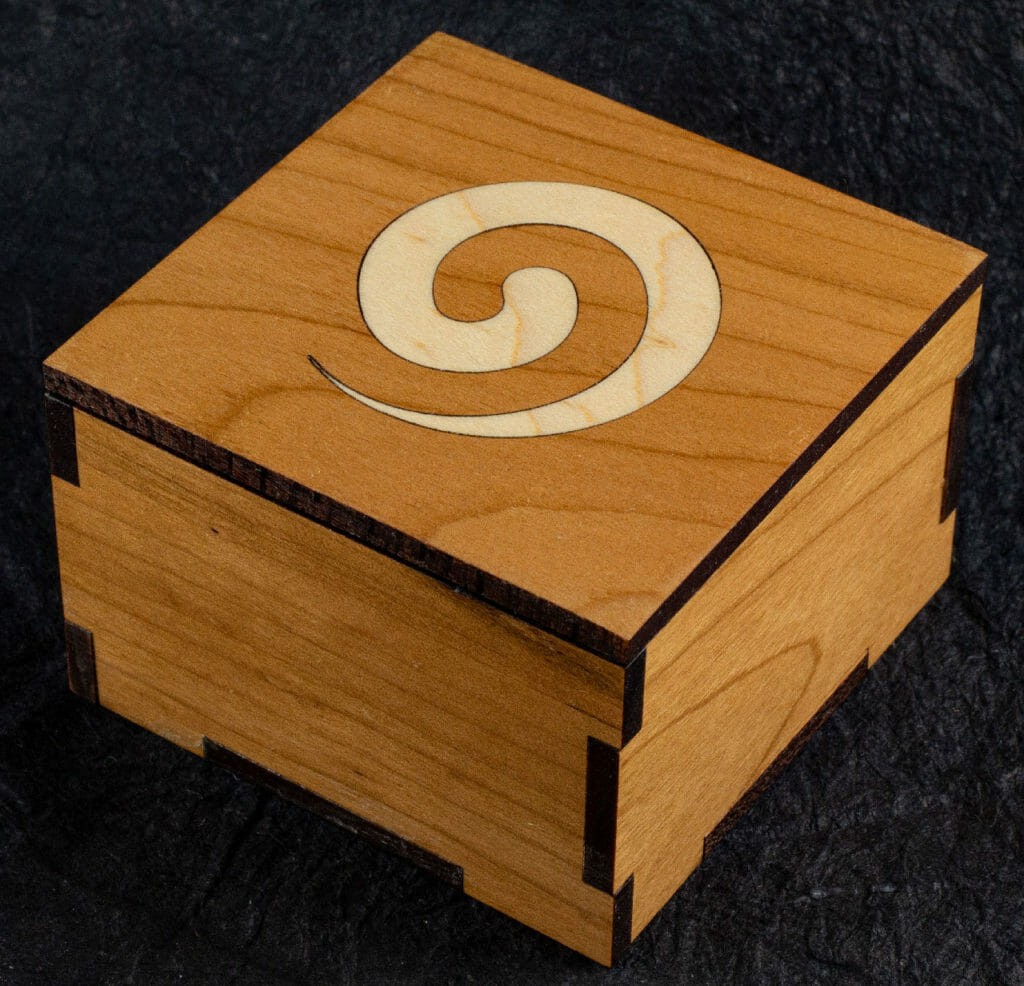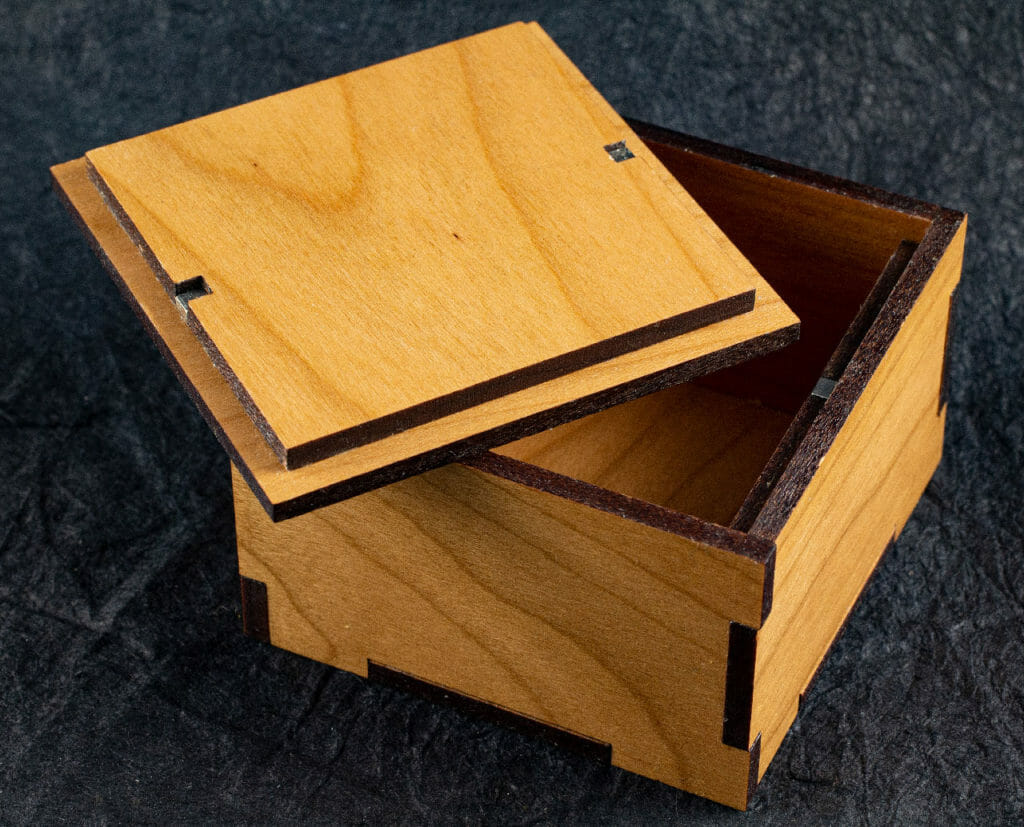Totoro Twisted-Crest OA/Kirigami Pop Up Card
Just open this card and … 🎶 you’ll be meeting Totoro! 🎶
Although I don’t normally do a lot with other people’s characters or designs, some of Hayao Miyazake’s movies have a special place in my heart. I know they do for many others, too. So, I did this for some upcoming birthdays.
I sketched my Totoro (Totoros?) in Procreate on the iPad, with a still from the movie as a reference. I used the sketch as a reference to make a vector version in Inkscape. I created the ferns the same way. I designed the flowers directly in Inkscape.
Engraving wasn’t providing enough contrast, even when dusting with chalk. So, the white on the fronts are polyester sticker stock where I just cut the sticker layer and weeded it. I filled in the tail engraves with a white gel pen.
Celtic Key Patterns
Celtic key (or maze) patterns figure prominently in a few past and a bunch of upcoming projects. So, I made a quick video with some basics on how I assemble those as vector art images. I used Inkscape for these but, the principles are the same for any vector art program.
Celtic Art: The Methods of Construction by George Bain
Celtic Key Patterns by Ian Bain
Celtic Pattern: Visual Rhythms of the Ancient Mind by Adam Tetlow
(Proceeds from associate links defray hosting costs for a local arts organization, Arizona Aikido.)
Quest Battery Pouch
Something I noticed pretty quickly with my new Oculus Quest VR headset is that it slips forward very easily, especially during the sort of very active games I got it to play. It is pretty front-heavy. So, some ballast on the back strap helps quite a bit.
I taped a battery pack I had on-hand to the back strap with gaffer tape to confirm that it helped with the issue. I decided I really wanted something a little more elegant, though. So, I designed and made this battery ballast pouch.
If you want to make one of these, the files are all linked below, along with instructions and a build video.
Instructions / Fabrication Notes
There are two pattern files: one for cutting the pouch from the faux leather and, one for the rigidity insert.
The purple square is where you would put any graphic you wanted on the flap. You could actually use all of the horizontal space to the edges of the flap, if you wanted. Anything farther towards the body (down) will bend over the top of the battery, though.
For engraving the JPP Saddle Collection faux leather on the Glowforge, I used 1000 speed, 30 power and 225 LPI. You are on your own for figuring out settings for other equipment.
Everything else in the pattern is cut using 245 speed and 60 power.
I cut the 1/8″ acrylic for the rigidity insert with the usual Proofgrade settings on the Glowforge.
Design Files
These files are for personal, non-commercial use only. If you want to produce these to sell or for other business use, please contact me to arrange for licensing terms. Also note that, by referencing these, you are agreeing to release any variations you create under identical terms.
Resources
I know not everyone has a laser cutter but, many communities have maker spaces where you can get access to tools like laser cutters and, assistance learning to use them for free or, for a small fee or donation. Support your local communities, learn new skills and make new friends!
As I mention in the video, the Saddle Collection faux leather cuts great with a craft knife, screw punch, etc. So, you could absolutely do this without any fancy equipment.
Of course, if you really want your own laser, feel free to use my Glowforge referral code to purchase your own. Glowforge will give you a discount off their posted price and, I will get a credit kickback to help defray the cost of materials for future projects. Your support is always appreciated.
Amazon referral links for some parts and incidentals defray IT and hosting costs for a local arts organization (Arizona Aikido):
Anker PowerCore Slim 1000PD Power Bank (rechargeable battery)
“Saddle Collection” Faux / Vegan Leather
Industrial adhesive-backed Velcro
Industrial Velcro in Larger Rolls
Acrylic Wall Mount for Oculus Quest
I recently got an Oculus Quest VR headset to help encourage me to do some more cardio activity through the long Phoenix summer. Looking at it sitting on the floor for a couple days made me realize it really needed a better place to be when not in use. It needed to be near enough to a power outlet to charge and, convenient enough to just grab it and use. I keep it in a room where I exercise and practice my taiko. So, there is not a lot of furniture. A wall mount seemed like a good choice.
Nothing I found online really looked like what I wanted, though. I have some 1/4” acrylic that is tinted with green in a way that gives a solid impression of glass. So, I thought I would try making a wall mount from that.
You can see the result in the photos here and, in the video.
If you want to make one of these, the files are all linked below.
Instructions / Fabrication Notes
The red-brown and purple outlines are the main cuts. I just used the standard Thick Acrylic Proofgrade settings on the Glowforge for those. I separated them out of habit for preferring to cut from the inside out.
The pale green rectangles are for position of the Command Strips, if you want to use those. You probably don’t want to cut or score them.
If you want to use screws to mount it instead, the gray circles would be engraved to an appropriate depth for the heads of the screws with the inner red circles cut through. These were set up for #6 screws. I didn’t go this route. So, you are on your own for the appropriate engrave settings. Ideally, you would run tests on a scrap. If you are not using screws, set these to ignore.
I cut the forms from Medium Draftboard. Any inexpensive 1/8” thick wood-based stock should work fine. Cut two sets from the file below. If you have a better idea for how to do this, let me know in the comments below or, send me a message.
The easiest way to understand making the bends is to watch the video. Basically, you want to localize the heat to where you want each bend as much as possible and, brace adjacent areas you don’t want bent or deformed to keep them from bending. Bending the main necks of the controller hooks before turning up the ends of the prongs is probably best. It is likely also easier to bend the controller hooks without the central hook being in the way of setting it down flat.
Design Files
These files are for personal, non-commercial use only. If you want to produce these to sell or for other business use, please contact me to arrange for licensing terms. Also note that, by referencing these, you are agreeing to release any variations you create under identical terms.
Resources
I know not everyone has a laser cutter but, many communities have maker spaces where you can get access to tools like laser cutters and, assistance learning to use them for free or, for a small fee or donation. Support your local communities, learn new skills and make new friends!
Of course, if you really want your own laser, feel free to use my Glowforge referral code to purchase your own. Glowforge will give you a discount off their posted price and, I will get a credit kickback to help defray the cost of materials for future projects. Your support is always appreciated.
Amazon referral links for the heat gun and shop incidentals defray IT and hosting costs for a local arts organization (Arizona Aikido):
Inlaid Hardwood Box
I have been wanting to try wood inlay using the laser. I eventually figured out that some issues with previous explorations using acrylic were due to a consistency problem with Corel Draw’s SVG export. Although PDF export is workable, I have mostly switched to using Inkscape for this sort of thing.
I did a couple of test pieces to get the fit right (I actually spent more time on the box tabs). So, this is my first completed piece.
This is .25-inch cherry hardwood with maple inlay. The box is 2.5 inches square and about 1.55-inches tall (phi-ish FTW). Box assembly is good but, not snap-fit. The lid fits tightly on its own but, I added small magnets for a little extra grip. The outer surfaces are finished with wipe-on polyurethane.
This was a good learning experiment and, I have a list of things to try for the next attempt.
Spiraling Pop Up Card Folding Video
Here is a short folding video for the Spiraling pop up card design.

